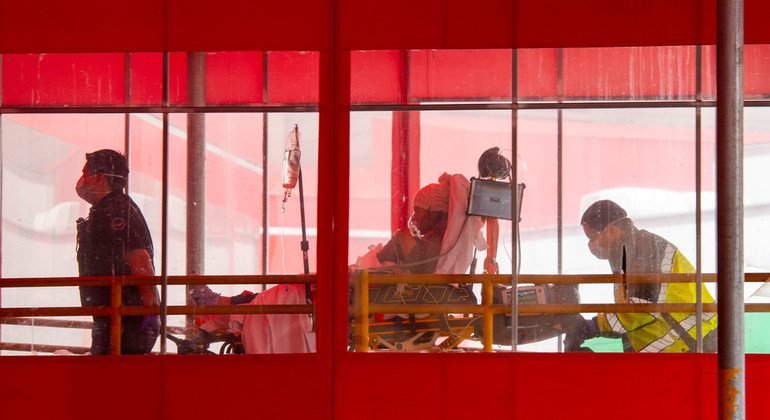The Supreme Court allowed the Trump administration on Thursday to subsidize the subsidies of the National Health Institutes as part of the Federal Government campaign against diversity, equity and inclusion policies.
But in a mixed decision, the court left in its place a different part of the ruling of the judge of the lower court that eliminated the administration guide document that introduced the policy, asking questions about whether it can be applied in the future.
The judges, in a 5-4 vote, partly awarded an emergency application filed by the Administration that seeks to put a decision of Federal Judge based in Massachusetts.
The court did not completely explain their reasoning, but most indicated that groups that seek to challenge the financing cuts must file separate lawsuits in a different federal place: the Federal Claims Court.
Conservative judge Amy Coney Barrett was the decisive vote in the elaboration of the decision. Four judges, all conservatives, said they would have granted the request of the Trump administration in its entirety, while four others, the conservative president of the Supreme Court John Roberts and the three liberals of the Court, would have denied it in its entirety.
“As the current order establishes, the District Court probably lacked jurisdiction to listen to challenges to subsidy terminations, which belong to the Federal Claims Court,” Barrett wrote in a concurrent opinion. But, he added, “the government has no right to a suspension of judgments to the extent that guidance documents cancel.”
The National Institutes of Health (NIF) is a collection of agencies within the Department of Health and Human Services that receives billions of dollars from Congress to finance medical research in universities, hospitals and other institutions.
When President Donald Trump assumed the position in January, he promised to end the so -called diversity, equity and inclusion, or DEI, policies, saying that, instead of promoting equality as planned, they are a form of discrimination, mainly against white people. He has also pointed to policies that recognize transgender rights, including access to gender transition care.
Then, the NIH made a review of the subsidies and determined that more than 1,700 of them were not consistent with the Trump directives and finished them, including studies on HIV prevention and gender identity among adolescents.
The movements were challenged by 16 states led by Massachusetts and the American Public Health Association, among others.
After a trial, the American district judge William Young in Massachusetts ruled that the government had not achieved the correct legal processes in the implementation of the policy, in violation of a law called Administrative Procedure Law.
By hurrying to implement Trump's agenda, NiH “simply moved too fast and broke things, including law,” Young wrote.
He also said that Dei was “an indefinite enemy”, noting that government lawyers had not been able to explain exactly what it meant.
Young discovered that there was “generalized racial discrimination” and “extensive discrimination” against homosexual, lesbian and transgender people in how subsidies for termination were selected. He also found “an unmistakable discrimination pattern against women's health problems.”
Young refused to put his ruling waiting, as well as the Court of Appeals of the United States circuit based in Boston, which also maintained intact subsidies.
By asking the Supreme Court to intervene on behalf of the Trump administration, the Attorney General D. John Sauer argued that the case is similar to the other that arose in Massachusetts in which a judge blocked the Trump administration plans to end with teacher training subsidies for anti-Edei reasons.
The Supreme Court in April blocked that decision in a 5-4 vote.
“This request presents a particularly clear case for this Court to intervene and prevent the Errant District Courts from continuing to ignore the decisions of this court,” Sauer wrote.
The United States lawyers retreated Sauer's narrative, saying that “it looks little to reality, and Young governs an example of” factory factory “of a court that intervenes when the government violates the law.
The judges on Thursday did not agree on whether April's decision ruled the result in the last case.
In a brief opinion, Roberts, who disagreed in the previous case, said it was different, with the findings of Young “well within the reach of the jurisdiction of the District Court.”
But the conservative judge Neil Gorsuch, in his own separate opinion, criticized Young for not complying with the April decision.
“The judges of the lower court sometimes disagree with the decisions of this court, but are never free to challenge them,” he wrote.
The Trump administration regularly resorted to the Supreme Court when its general use of the Executive Power is challenged in the Court and prevailed in most cases. Trump and his allies have also criticized the judges who have governed against him.












